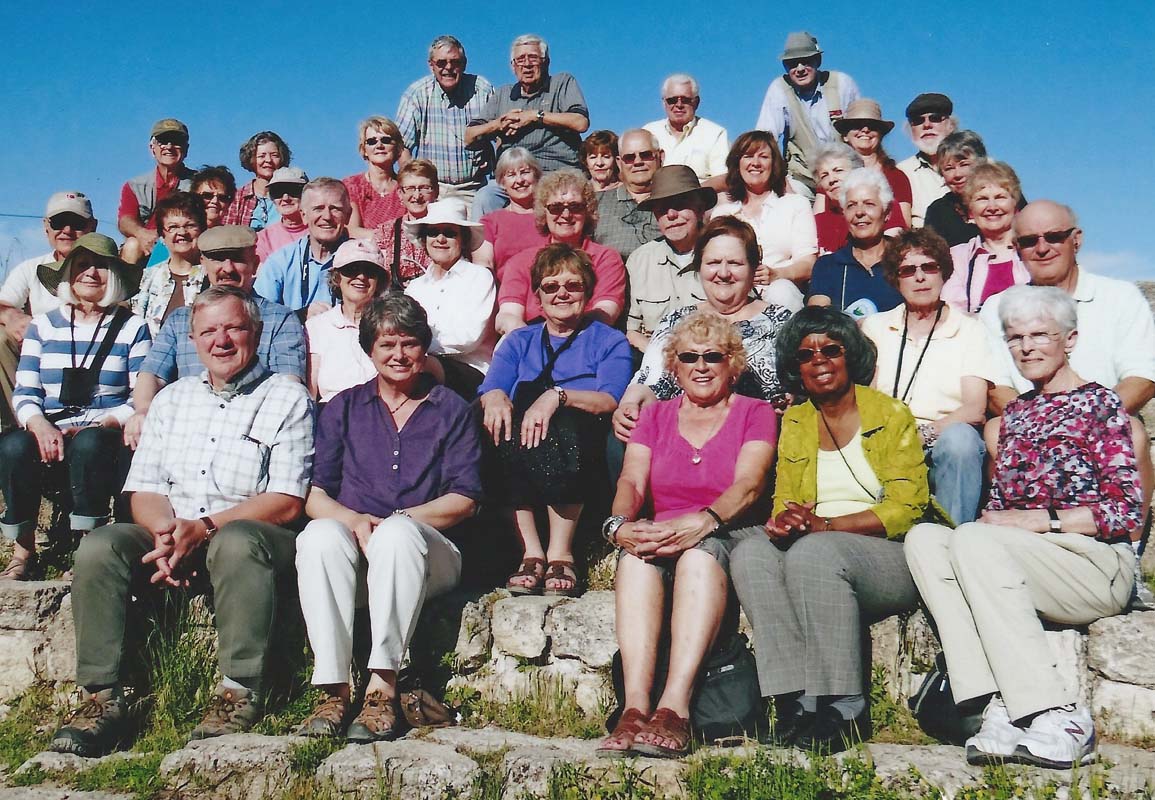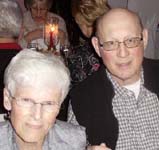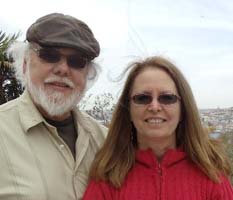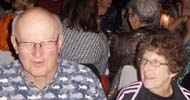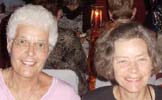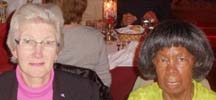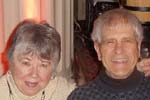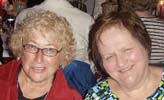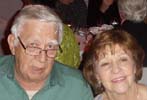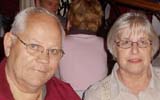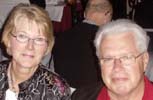Visiting Turkey |
Our first trip joining a tour, "Journeys with Jeff" is not just some impersonal tour group. Jeff and his wife Ann joined us on our adventure. Jeff, a retired German teacher, for years organized trips to Germany to allow his students the opportunity to actually visit the countries whose language they were trying to master. Developing the skills necessary to organize overseas trips, jeff has since developed quite a following of participants who join him frequently on adventures to various countries. This Journey began with an overnight flight to Turkey. A country steeped in history as the cradle of many civilizations and the center of the Greek, Roman and Ottoman Empires. Upon our arrival at Istanbul’s Ataturk Airport, we met our guide who would chaperon us during our stay in this most intriguing country. By motor coach we would soon find ourselves at our first of many hotels during this tour. From there we explored Istanbul, the magical city gateway to the Aegean and Mediterranean Coasts, a city of fascinating history and beauty. It is a metropolis of exquisite palaces, magnificent mosques and memorable museums., as well as being the prominent city of modern Turkey. After a nice dinner at the hotel, a good nights rest and a marvelous breakfast the next morning, we enjoyed a short drive along the Sea of Marmara on our way to Canakkale, and then to the Ruins of Troy where we saw a replica of the huge wooden Trojan horse that Ramona was able to enter as the Greeks used to enter that city to end their conflict. After a fruitless 10-year siege, the Greeks constructed a huge wooden horse, and hid a select force of men inside. The Greeks pretended to sail away, and the Trojans pulled the horse into their city as a victory trophy. That night the Greek force crept out of the horse and opened the gates for the rest of the Greek army, which had sailed back under cover of night. The Greeks entered and destroyed the city of Troy, decisively ending the war. Another day completed we began another by driving to Pergamon, to visit the Acropolis, where, under the Emperor Eumenes II, Pergamon made its mark on the world stage. Pergamon was a major city in western Asia Minor during New Testament times. It lies in a spacious valley, sixteen miles from the Aegean Sea. In the centuries BC, Pergamon was the capital of an independent kingdom. Its impressive temples, library, and medical facilities made Pergamon a renowned cultural and political center. The following day took us to Slecuk, where we would explore Ephesus, one of the largest and most wonderful archaeological sites in the world. Some exceptional structures include: the Library of Celsius, The Grand Theater, Hadrian Temple, Marble Street and Agora. And later to visit the House of the Virgin Mother. According to legend, the Virgin Mary and St. John came to Ephesus and eventually died there. Soon after our historical encounters, we visited a leather production outlet that makes leather goods for such big names a Gucci. Here Ramona was asked to join a cast of models who would saunter down a runway displaying the products that this outlet produces. After a nice Turkish lunch we continued our drive to the city of Pamukkale, where we explored the extensive ruins of Hierpolis. The ruins of this once-grand city brilliantly evoke life in the early centuries of the modern era. The to visit the unique Cotton Castle, a magical and spectacular natural phenomenon that was created by deposits from the thermal waters that tumble down the mountain over thousands of years, forming myriads of pools. A lovely journey back to our hotel for dinner and to then prepare for the next day. After another nice nights rest and an ample breakfast, we continued our travels eastward to Konya in the heart of Anatoia to visit the Tomb of Mevlana, one of the famous Turkish philosophers whose students created the Whirling Ceremonies. After lunch we visited the Karatay Madrese. Used as a university for hundreds of years, it presently houses a fine collection of ceramics. The next couple of days we directed our motor coach toward Cappadocia where we visited the Sultanhani Caravanserai, which is an example of the elaborate “hostelries” built hundreds ago to accommodate the many camel caravans that traversed what was then the Ottoman Empire. From there we then explored the Ihlara Valley, a spectacular canyon formed eons ago by nearby Mt. Hasan. Three million years ago, this region was covered with tuff after a violent eruption of two volcanoes. Through the years, the unique landscape of Cappadocia evolved from erosion of the ash sedimentation by wind, sun, rain and snow, sculpting the land into countless, strangely shaped pillars, cones and “fairy chimneys”. One highlight of our visit was the underground city of Kaymakli, which may date back as many as 4,000 years to the time of the Hittites. As we went underground it was like entering a huge and very complex Swiss Cheese – holes here, holes there, windows from room to room, paths going this way and that and more levels of rooms above and below. We then continued our sightseeing at the Goreme open-air Museum. Finally, we visited the Avanos Village – a small town famous for pottery and carpets. We visited one of the factories to observe the art of pottery making and carpet weaving. After breakfast the next morning we drove to Ankara, present capital of Turkey. First lunch after our arrival and then a visit to the Mausoleum of Ataturk, including the beautiful gardens in the Ataturk Museum Pavilion, a richly furnished early 19th century complex that was Ataturkk’s country retreat in the early days of his reign. The various historical documents and personal effects there made this one of the paramount museums to experience. Later we traveled to Bolu for dinner and to spend the night. The following morning we completed our irregular polygon journey back in Istanbul to explore the Grand Covered Bazaar. Covered by hemispheric domes, the Bazaar houses 4,000 shops. World known carpets, hand printed ceramics, copper, brassware and leather goods were plentiful here – and the prices were quite reasonable. Dinner followed and then a good nights rest. Breakfast the following morning and then some more sightseeing within this famous city. First on our agenda was the Roman Hippodrome, where chariot races were held in old Constantinople, Istanbuls previous name. Then to the beautiful Blue Mosque. Sultan Ahmet I set out to build a mosque that would rival and even surpass St. Sophia. We then visited the Topkapi Palace – the residence of Ottoman sultans for almost four centuries and Istanbul’s premier attraction. Unlike European-style palaces, Topkapi is not one large building with outlying gardens. Rather, it consists of a series of pavilions, kitchens, audience chambers and kiosks built around several garden courtyards. Later we visited St. Sophia, one of Old Istanbul’s most imposing sighs. Emperor Justinian had it build as part of his effort to restore the greatness of the Roman Empire. That night we celebrated our final night Turkey with dinner and a belly dance show at a local restaurant. After an ungodly early breakfast the next morning we drive to Ataturk Airport to end our time in Turkey but, by no means to end our journey. Our flight would find us touching down in Athens Greece. Return to our main page and select our Greece icon to read about the rest of our adventure. |
The Participants Click on a picture for full view
|
